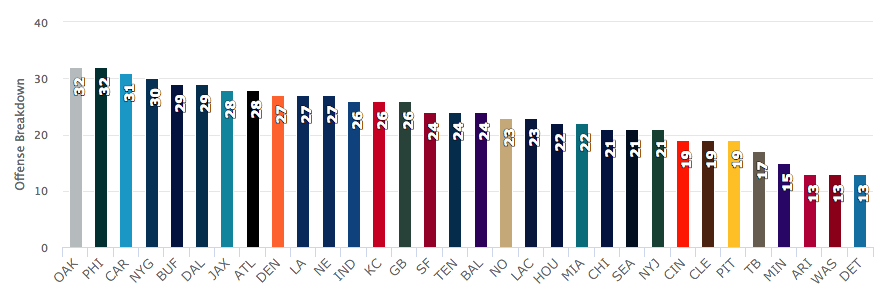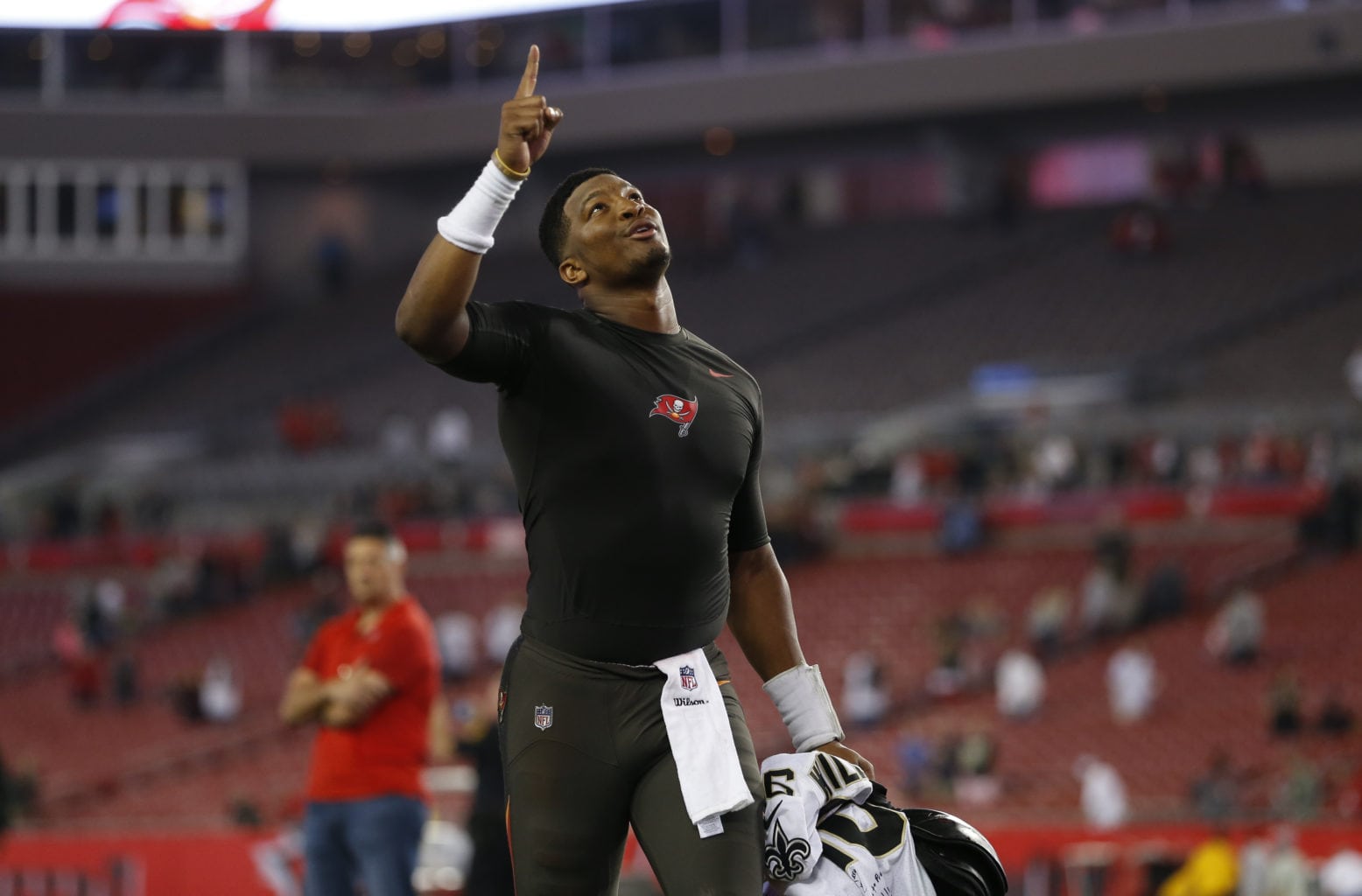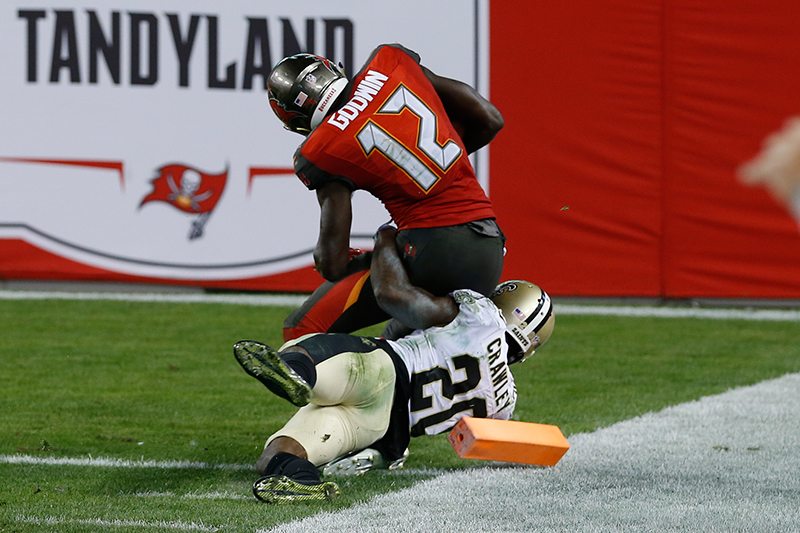Cover 3 is a weekly feature column written by PewterReport.com’s Tampa Bay Buccaneers beat writer Trevor Sikkema published every Tuesday. The column, as its name suggests, comes in three phases: a statistical observation, an in-depth film breakdown, and a “this or that” segment where the writer asks the reader to chose between two options.
Sikkema’s Stat(s) of the Week
Though unsuccessful in the end, 2017 was an exciting year for the Buccaneers – one of the most highly anticipated and excitement-filled offseasons in a long time. There were major free agency splashes, big-time draft selections, a fired up training camp crowd that was featured on Hard Knocks and a lot more. Unfortunately, that didn’t translate to many wins this year as the team regressed from the previous 9-7 season with a 5-11 finish.
So what went wrong? How did we go form hype to horror in the span of just 17 weeks?
With the year all wrapped up, I wanted to take a look at a few stats. Some of them will have to do with the team’s shortcomings, other will just identify tendencies that we might either continue to see in 2018 under the same coach staff (for now) or hope and pray go away for the next six months – maybe both.
The first is what the Bucs did in the red zone. Or didn’t do. Overall, the Buccaneers ranked 24th in the NFL in red zone efficiency (which are touchdowns only) at 49.06 percent. The top team in the league, Philadelphia, finished the year at 65.45 percent while the bottom team in the league, Denver, finished at 39.58 percent. Simply put, the Buccaneers have to finish better in the red zone. They have the receiving corps. that much more resembles the likes of the Eagles, the Patriots and the Jaguars – Top 5 teams in red zone efficiency – more than they do the Colts, Cardinals and the Broncos – teams near the bottom.

Bucs head coach Dirk Koetter – Photo by: Getty Images
The Buccaneers threw the fourth most passes in the NFL this season with 637 attempts. However, quarterback Jameis Winston threw the 25th most passes in the red zone with just 44 attempts. If you throw in Ryan Fitzpatrick’s 28 red zone attempts this season and just add them to Winston’s, the Bucs would have had the ninth most red zone passing attempts. That falls in line with how they attacked most of the rest of the field, but where they convert elsewhere, they couldn’t within the 20-yard line.
Red zone work often has to do with spacing. It’s hard to be a play designer in the NFL. We, myself included, criticize things plenty from our couches and computers, but the fact of the matter is the game gets more difficult on offense with the less space you have to work with, and that makes for a tough job. As the ball gets closer to the end zone, that space become less and less. That’s why you see the best play callers in the NFL are often also aligned with the offenses that convert the most when the space to work with is tight – red zone and third down. The Buccaneers actually had the fourth highest conversion percentage on third down this season at 43.37 percent. The three teams above them were Atlanta, Minnesota and Pittsburgh – all teams bound for the playoffs.
Does that mean the Bucs aren’t far off? Perhaps there’s some truth to that. Numbers suggest that even the percentage that work for the Buccaneers this year wasn’t as bad as it seemed. Last season the Bucs were 20th in the league in red zone efficiency at 51.85 percent, the year before that they were 22nd at 52.94, and in Koetter’s final year in Atlanta, he was sixth at 61.36. So it seems the number doesn’t matter as much by itself as it does compared to an ever-fluid league. Koetter has been above 50 percent, at times, but hasn’t cracked the Top 20 red zone offense, but the one time he did it paid off big time with the Falcons.
So maybe the Bucs weren’t that close. More often than not Koetter’s offenses have been in the bottom half of the league in terms of red zone efficiency, but to be fair, that’s across three stops and the years he figured it out the team did well. So maybe the Bucs can be that close. Koetter’s numbers say he’s due for a big red zone year in 2018. But are you someone who bets when the color is hot or do you bet that it’s bound to switch?
For my final stat overview I wanted to bring up something I referenced earlier in the year and that is the Bucs rushing attack on third-and-short – or lack thereof.
 The Bucs had the third lowest amount of rushing plays on third down with distances less than four yards in the NFL. Now, if you remember, they had one of the highest third down conversion rates, so you might ask why I bring this up. The reason is because I believe that running the ball on third-and-short can be helping in other situation as well. If the Bucs are in third-and-short, there’s a good chance they’re going four-wide with running back Charles Sims in the game. On the surface, I have no problem with that. But, I believe that this team’s identity lies in it being a play-action football teams.
The Bucs had the third lowest amount of rushing plays on third down with distances less than four yards in the NFL. Now, if you remember, they had one of the highest third down conversion rates, so you might ask why I bring this up. The reason is because I believe that running the ball on third-and-short can be helping in other situation as well. If the Bucs are in third-and-short, there’s a good chance they’re going four-wide with running back Charles Sims in the game. On the surface, I have no problem with that. But, I believe that this team’s identity lies in it being a play-action football teams.
If you don’t run the ball on third down, you’re not going to be that; no team is going to believe you in play action. Being more willing to run the ball on third-and-short in general may theoretically allow the Buccaneers to be more deceptive in the red zone with their bigger package formation that involve tight ends Cameron Brate and O.J. Howard. We’ve seen both of those player be used as red zone weapons throughout the year, but with them, Mike Evans and a balanced rushing attack – or, at least, a threat of balance – I think that red zone efficiency number could go up organically. That could also lead to certain receiver routes getting more open as well throughout the game.
Those are the two big offensive stats that I wanted to examine this week to just bring to the forefront. As the offseason rolls on and we get to talk more about the “what if,” I’ll take some time to show examples of other teams who are performing well in those areas and who Koetter and his staff might be able to take some tips from going into 2018.
Now, on the next page, we’re going to have a little fun.




